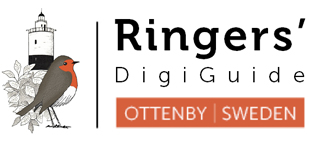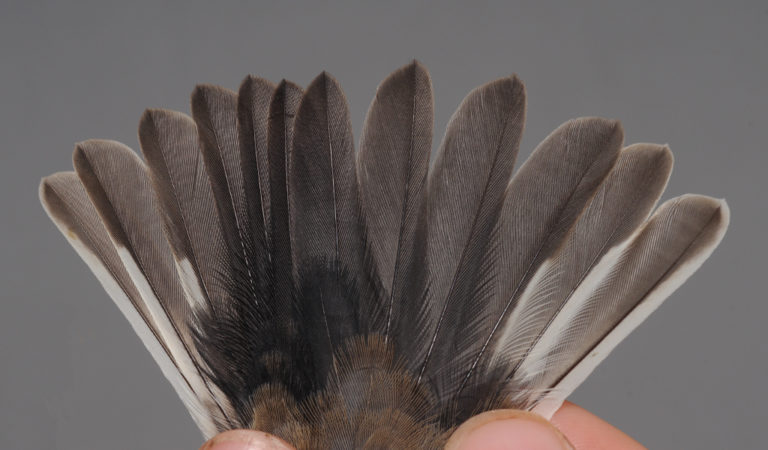

Pied Flycatcher
AGE – BEST CRITERIA:

1cy August (male). Typical juvenile RR are slightly narrower and shows more pointed tips than adult feathers. However, there is some variation and juvenile RR with a shape that is less easy tell from adult (like the one shown here) are not uncommon. The less dense structure is often helpful in such individuals. [CP46459]
More Ficedula hypoleuca:
Sexing autumn
Ageing spring
Sexing spring
Moult
Identification
Ringers’ DigiGuide is sponsored by: